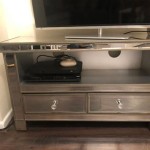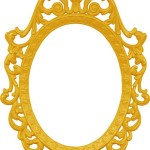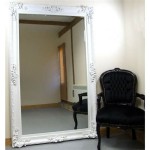Framing a Builder-Grade Bathroom Mirror
Builder-grade bathroom mirrors are functional but often lack aesthetic appeal. They tend to be plain, rectangular slabs of reflective glass adhered directly to the wall. Framing these mirrors is a simple yet effective way to elevate a bathroom's design, adding a touch of elegance and personalization without requiring a complete renovation. This article explores the various aspects involved in framing a builder-grade bathroom mirror, from material selection to installation techniques.
Choosing the Right Frame Material
Selecting the appropriate frame material depends on several factors, including the bathroom's overall style, the desired level of durability, and budget constraints. Wood offers a classic, warm aesthetic and can be stained or painted to complement existing décor. However, wood requires proper sealing to withstand the humid bathroom environment.
Another popular option is medium-density fiberboard (MDF), a cost-effective and versatile material that can be easily molded into various profiles. MDF also requires sealing against moisture. For a more contemporary look, metal frames, such as aluminum or stainless steel, provide sleek lines and excellent moisture resistance. Polyurethane frames offer a lightweight and affordable option that mimics the look of wood but requires less maintenance.
Considering the potential exposure to moisture is critical when selecting a frame material. Untreated wood or MDF can warp or rot in humid conditions. Opting for moisture-resistant materials or applying appropriate sealants are crucial steps in ensuring the frame's longevity.
Measuring and Cutting the Frame
Accurate measurement is fundamental to a successful framing project. Begin by measuring the mirror's dimensions precisely, noting the width and height. When calculating the frame's dimensions, consider the desired overlap onto the mirror surface. Typically, a slight overlap of ¼ to ½ inch is recommended for a visually appealing finish.
Once measurements are confirmed, transfer them to the chosen frame material. Use a miter saw to make precise 45-degree angle cuts for the frame pieces. The mitered cuts ensure seamless corners when the frame is assembled. Double-checking measurements and angles before cutting will minimize material waste and ensure a proper fit.
For intricate frame designs, consider using a coping saw for curved or irregular cuts. Always prioritize safety by wearing appropriate eye protection and following manufacturer guidelines when operating power tools.
Assembling and Installing the Frame
Assembling the frame involves joining the mitered pieces to form a rectangular structure. Wood glue provides strong adhesion and should be applied sparingly to the mitered edges. Clamps can be used to hold the pieces together while the glue dries, ensuring tight joints and a square frame.
Once the glue has cured, reinforce the joints with finishing nails or brads. Countersink the nails slightly and fill the holes with wood putty for a smooth, professional appearance. Sand the frame lightly to remove any excess putty and prepare the surface for finishing.
Several methods can be used to attach the frame to the mirror. Construction adhesive is a popular choice, providing a strong bond directly to the mirror surface. Alternatively, mirror clips or mounting hardware can be used to secure the frame without directly adhering it to the mirror. This allows for easier removal or replacement if needed.
Before applying adhesive, ensure the mirror surface is clean and free of dust or debris. Apply the adhesive evenly to the back of the frame and carefully position it onto the mirror. Use painter's tape to hold the frame in place while the adhesive dries. If using clips or mounting hardware, follow the manufacturer's instructions for proper installation.
Finishing Touches
The final step involves applying the desired finish to the frame. Wood frames can be stained or painted to match the bathroom's color scheme. Multiple coats of sealant are recommended for wood frames in high-humidity environments. Allow ample drying time between coats.
For MDF frames, priming is necessary before painting. A high-quality primer will ensure proper paint adhesion and prevent the MDF from absorbing moisture. Apply several coats of paint, allowing each coat to dry thoroughly. A protective topcoat can add durability and enhance the frame's longevity.
Metal frames generally require minimal finishing, but a protective coating can prevent scratches and maintain their sheen. Polyurethane frames often come pre-finished but can be painted if desired. Choosing the right finish not only enhances the frame's aesthetic appeal but also protects it from the harsh bathroom environment.

How To Frame A Builder Grade Bathroom Mirror At Home In The Wildwood

How To Frame A Builder Grade Mirror The Turquoise Home

How To Frame A Builder Grade Mirror Sew Woodsy

Diy Double Framed Mirror Builder Grade Upgrade I M Home

How To Frame A Bathroom Mirror Nest For Less

Framing A Bathroom Mirror Tempting Thyme

Diy Framed Bathroom Mirrors Living With Lady

How To Frame A Builder Grade Mirror The Turquoise Home

How To Upgrade Your Builder Grade Mirror Frame It Cost Us Around 30 Bathroom Mirrors Diy Trendy Apartments

How To Install A Mirrorchic Bathroom Mirror Frame Momhomeguide Com








